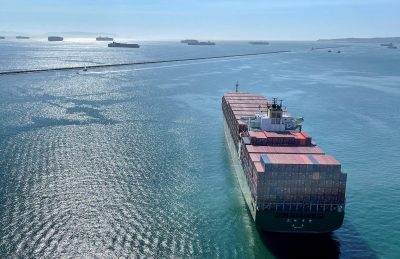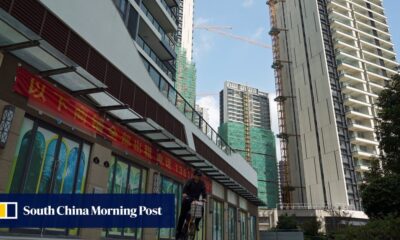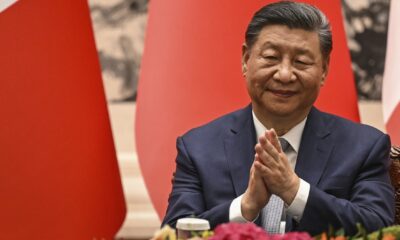Trade
Huge uncertainties still surround US trade policy

Author: Editorial Board, ANU
Donald Trump’s presidency signalled a decisive US retreat from free and open trade and leadership of the multilateral trading system that had fostered unprecedented trade and economic growth for over 70 years.
Trump built his political claims to high office by drawing on a deep well of resentment among middle-class Americans who’d been denied the benefits of the gains from international trade by a national system for distributing them that was inadequate and broken. And he fingered the international trading system and foreigners, especially China, as the cause of America’s own problems and neglect and walked away from the Trans-Pacific Partnership trade agreement that the Obama administration had instigated.
By the end of Trump’s term, the initiation of trade war with China had ended in a rule-breaking and damaging managed trade deal and allies and partners were subject to trade imposts on grounds of national security. The appointment of members to the appellate body of the WTO, arbiter of the international trade rules that the United States had largely crafted, was stymied by US veto. The principles of international trade that still provide the confidence and trust on which global integration has been built, nowhere more so than in the Asia Pacific region, were under US attack and the rules being flouted by the world’s two largest economies.
Settling on a new, coherent trade strategy has not been a Biden administration policy priority. Policy attention has been dominated at home by recovery from the pandemic and the big infrastructure spend and abroad by the messy withdrawal from Afghanistan and security posture towards China.
US Trade Representative Katherine Tai’s slogan of a trade policy to serve America’s middle class is just that — a political slogan that has yet to gain any policy substance. Meanwhile, America’s middle class has dwindling income ripped out of its collective pocket by the tariffs that remain on Chinese imports, as both Tai and Commerce Secretary Gina Raimondo acknowledge that decoupling from the world’s largest trader is not a viable option.
The advent of the Biden administration held promise of a return to respect for international institutions, prominent among them the WTO. It was quick to remove the logjam around the appointment of its new Director General, Ngozi Okonjo-Iweala, and mend trade relations with Europe, albeit with total disregard for multilateral rules. But the US veto on appointments to the WTO Appellate Body is still in place, Biden too has eschewed the Trans-Pacific Partnership, now the Comprehensive and Progressive Agreement for Trans-Pacific Partnership (CPTPP), and is negotiating with China within the framework of Trump’s Phase One trade deal that disrespects multilateral trade rules in favour of bilaterally managed trade.
In our lead article this week, Gary Hufbauer and Megan Hogan say that ‘like Trump, Biden has struggled to craft an effective approach to deal with China. Multiple WTO cases have prompted China to reform individual aspects of its trade regime, but there has been no action through the WTO that’s persuaded Beijing to alter foundational features — namely forced technology transfers and subsidisation of state-owned enterprises. Trade battles have not relaxed US fears over China’s military and technology ascent’. True, there’s an agenda for global trade system reform, but the United States shows no inclination to engage on it nor to frame any overarching strategy that would deal with its trade policy woes.
The alternative is a piecemeal, ad hoc approach to building coalitions that subsume trade interests under other issues. Having mended its squabble with Europe, Biden promised at the East Asia Summit last October that he would present an Indo-Pacific economic framework for engagement with Asia this coming year.
As Hufbauer and Hogan explain, ‘meaningful engagement in the region faces a number of challenges, from both inside and outside the administration … The consequence of presidential neglect was that rather than push a single framework, Secretary of State Antony Blinken, Raimondo, and Tai each supported different and somewhat competing angles on Indo-Pacific engagement’. Access to the US market served to attract partners to the Trans-Pacific Partnership. With tariff reductions off the table, the administration is considering other incentives, such as funding capacity building, infrastructure projects, and green financing. Everything seems to be in the mix except trade…
Trade
Self-Reliance and Openness: Core Principles of China’s Third Plenary Session

The Third Plenum communique from the CCP indicates a prioritization of stability and compromise in response to China’s economic challenges. It highlights the concept of Chinese-style modernization and establishes political guidelines for balancing regulation and market forces.
The CCP’s Third Plenum communique signals a focus on stability and compromise in the face of China’s economic challenges. It emphasises Chinese-style modernisation and sets political directions for balancing regulation and market forces. While not as groundbreaking as previous plenums, it acknowledges the importance of market mechanisms and technological self-reliance, aiming to address issues like high youth unemployment and private sector uncertainty. The communique seeks to navigate the complexities of global competition and domestic innovation, potentially reshaping global supply chains and trade dynamics. Overall, it presents a pragmatic blueprint for China’s economic future.
Source : Self-reliance and openness central pillars of China’s Third Plenum | East Asia Forum
Trade
Trade Prevails Over Political Persuasions in China-Germany Relations

China and Germany maintain a strong bilateral relationship, rooted in economic cooperation despite ideological differences. Recent visits and agreements focus on expanding trade and addressing mutual concerns, navigating challenges while nurturing ties.
Evolving Bilateral Ties
China and Germany share a strong bilateral relationship, rooted in history since 1972. This connection has seen moments of cooperation intertwined with periods of tension. German Chancellor Olaf Scholz’s April 2024 visit underscores Germany’s commitment to fostering this partnership, reflecting a mutual interest in maintaining economic ties despite ideological differences.
Economic Pragmatism
As the second and third largest global economies, China and Germany’s economic interdependence is crucial. Germany emerged as China’s primary trading partner in 2023, with trade values reaching €254.4 billion (US$280 billion). In response to global scrutiny, Germany has taken a balanced approach, emphasizing economic stability over political discord. This was evident during Scholz’s prior visit in November 2022, where his diplomatic tone contrasted with broader EU sentiments.
Facing Challenges Together
Despite increasing public skepticism in Germany regarding China’s global influence and human rights issues, both nations continue to seek common ground. Their October 2023 Joint Statement highlights intentions to pursue cooperation in areas like carbon neutrality and open markets. To navigate these complex terrains, Germany can utilize its institutional frameworks to enhance dialogue, while also considering supply chain diversification to reduce dependency on China. The intertwining nature of their economies suggests that, despite challenges, both countries will continue to prioritize their substantial trade relations.
Source : Trade trumps political persuasions in China–Germany relations
Trade
Fixing fragmentation in the settlement of international trade disputes

Fragmentation in global trade due to the lack of development in multilateral trade rules at the WTO has led to an increase in FTAs. The Appellate Body impasse has further exacerbated fragmentation, requiring a multilateral approach for reform.
Fragmentation in Global Trade
Fragmentation in global trade is not new. With the slow development of multilateral trade rules at the World Trade Organization (WTO), governments have turned to free trade agreements (FTAs). As of 2023, almost 600 bilateral and regional trade agreements have been notified to the WTO, leading to growing fragmentation in trade rules, business activities, and international relations. But until recently, trade dispute settlements have predominantly remained within the WTO.
Challenges with WTO Dispute Settlement
The demise of the Appellate Body increased fragmentation in both the interpretation and enforcement of trade law. A small number of WTO Members created the Multi-Party Interim Appeal Arbitration Arrangement (MPIA) as a temporary solution, but in its current form, it cannot properly address fragmentation. Since its creation in 2020, the MPIA has only attracted 26 parties, and its rulings have not been consistent with previous decisions made by the Appellate Body, rendering WTO case law increasingly fragmented.
The Path Forward for Global Trade
Maintaining the integrity and predictability of the global trading system while reducing fragmentation requires restoring the WTO’s authority. At the 12th WTO Ministerial Conference in 2022, governments agreed to re-establish a functional dispute settlement system by 2024. Reaching a consensus will be difficult, and negotiations will take time. A critical mass-based, open plurilateral approach provides a viable alternative way to reform the appellate mechanism, as WTO Members are committed to reforming the dispute settlement system.
Source : Fixing fragmentation in the settlement of international trade disputes






